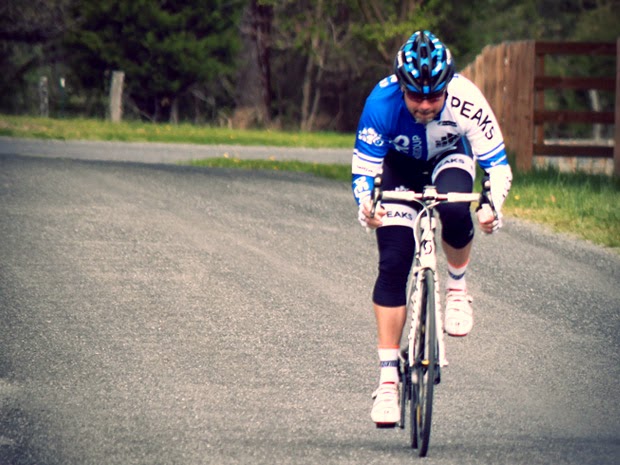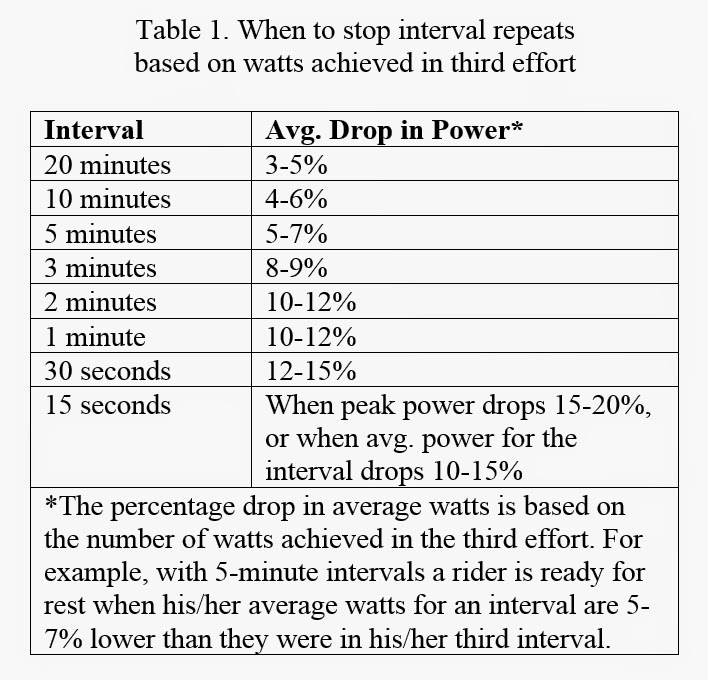When you’re in the peloton and fighting for the win, you’re in a war. It’s you and your team (if you have one) against everyone else. There are no holds barred. Everything goes. May the best man win. The sooner you realize this, the sooner you’ll start winning races. Those who never learn this are destined to finish out of the money and probably will be out of the sport within three years.
Cycling is hard, and racing is harder still. Sure, we all love to ride our bikes, and that’s the greatest part of it, but some of us also love to compete, to fight, to win. I often wonder about the best competitors, the winners, the guys and gals who consistently stand on the podium—if they weren’t bike racing, would they all be in the “Ultimate Fighting Challenge?” Bike racing is a game of the strong-willed and tough-minded, gritting your teeth, pushing yourself harder than the guy beside you, digging deeper than anyone else.
What can you do to stack the odds in your favor to make this war a winnable one for you or someone on your team? Train harder, train smart, and race even smarter are some of the keys to succeeding in cycling. Let’s talk about four ways (two in training and two in racing) that you can use your power meter to help you win the fight.
1. Do intervals to exhaustion.
There, I said it. To exhaustion. Do intervals until you can’t do them correctly anymore. Does that mean ten hill repeats? Twenty hill repeats? Who knows how many you should do? Well, if you have a power meter, it’s easy to figure out how many. Dr. Andrew Coggan and I developed the table below to accurately determine the correct number of intervals an athlete should do in each session without going too far over the hump in the diminishing marginal returns curve. We based the percentage drop-off on the third interval that you complete because typically the effort a rider can put forth in the first two intervals will be much higher than what he or she could actually repeat multiple times. Since we assume you’re fresh when you begin your interval session, we discard those first two efforts for the purpose of determining when to stop a workout. If you’re doing longer intervals in which you might only complete two intervals total, this rule obviously does not apply.For instance, if you want to improve your VO2Max system and prepare for an upcoming race that has eight 5-minute climbs, you’’ want to do 8 x 5-minute intervals between 106% and 120% of FTP. Let’s use 300 watts for an example and say that you crack out 360 watts in the first interval, 350 in the second, and 340 in the third. This third interval is what we call the repeatable interval; your watts in that interval are the watts you can repeat over and over for multiple repeats.
The reason this is so important is that we take the watts in the third effort and subtract 5% from it (in this case 340 x .05 = 17 and 340-17 = 323 watts), and when you can’t average at least this many watts (323) for your interval, it’s time to stop because now you aren’t training intensely enough in order to elicit a great enough stress to cause a training improvement or adaptation. Maybe the sixth interval is 320 watts, and because you’re an overachiever (aren’t we all?) and want to make absolutely certain you’re exhausted, you do one more interval. By minute two, however, you realize you can’t even maintain 310 watts, much less over 320. That’s how you do intervals to exhaustion. Dr. Coggan and I go into more detail on this in the second edition of our book, Training and Racing with a Power Meter.
2. Focus on pushing your chronic training load to the limit.
Chronic training load (CTL) is the cumulative fatigue that builds up over a long period of time. The basic idea behind all the research is that an ideal CTL is beneficial because it causes your body to undergo positive fitness adaptations. Keep in mind that the period of time involved can be anywhere from three weeks of hard training to six weeks, six months, or two years. Every old-school cycling coach out there will say that you just need another 20,000 kilometers in your legs to be at the top, and in many ways they are correct; it takes years and years to develop the physiological systems needed for racing at the highest levels. The more kilometers you have in your legs, the more training stress you’ll be able to handle, and the stronger you’ll become. Your current fitness depends on the training load you did in the past. Those training rides six weeks ago are definitely playing a role in your current fitness.The number one guideline you should consider is to make sure you don’t increase your CTL too quickly. Since CTL is based on the last forty-two days of training stress measured by Training Stress Score™ (TSS) for each ride, it’s hard to get this number to move, but with some hard consecutive weeks of training, you can increase your CTL at a greater rate than might be optimal for you. Right at the limit could make the warrior within spring forth! Most cyclists can increase their CTL at a rate of 3-7 TSS/day per week for up to four weeks in a row before taking a rest week. When you grow your CTL at greater than 8 TSS/day per week for more than four weeks in a row, the level of intense weekly hard training could be too much and send you into an overtraining downward spiral. It’s fine to go over 8 TSS/day per week for a week, and maybe even two weeks, but be careful after that; it can lead to a chronically over-reached state, and that’s overtraining. Over-reaching is fine; it’s what we have to do to improve, since overreaching is just hard training in the short term or growing your Acute Training Load (ATL). Over-training happens when you push your CTL number up too quickly in too short of a time period. Therefore, keep in mind that the training guidelines presented should be adjusted according to your own situation, fitness level, and goals.
3. Pace yourself in races with your power meter.
A power meter isn’t just for pacing in a time trial. It’s for pacing in a road race, off the front in a criterium, on long climbs, and even in a cyclocross race. When you know your numbers for multiple time periods—like what you can hold for an hour-long time trial or for a hard 3-minute VO2Max effort—you stand a better chance at pacing yourself correctly in a race. For example, if you attack off the front of a criterium with three other riders and then pull too hard in a break, you risk getting dropped out of the break or, if everyone is pulling too hard, the whole break getting caught. In a breakaway, if you’re sitting on and your power is over your FTP, you are in trouble. Do whatever you can in that instance to rest, coast, and soft pedal, and don’t even think of going to the front to take a pull. When you’re feeling strong, make sure you don’t pull too hard. This is a game of energy conservation. If you can get the break to the finish line with the most energy, you’ll be able to go for the win.Correctly pacing yourself in the beginning of a time trial has a lot to do with the length of that time trial. If your time trial is longer, like 40 kilometers, you should probably hold back a little for the first 5 minutes of the event. If it’s shorter, like 10 miles, you can’t afford to hold back so much, so maybe you only hold back for the first 2 minutes. The shorter the event, the less you hold back. If it’s a 4km pursuit, there’s almost no holding back; it’s just a matter of how much you can hold onto at the end of the effort.
Pacing when dealing with wind is a whole other subject. It’s clear that when you’re in a time trial with a headwind and tailwind section, the time trial is won in the headwind, as the tailwind neutralizes many of the fitness differences between athletes. In a crosswind or over rolling terrain, the strategy isn’t as clear, but one thing is for sure: an iso-power strategy is always a good fallback. When in doubt, just pace yourself as smoothly and steadily as possible.
4. Compare the demands of your races to your training.
Use your power meter for every race you enter. Capture all the data and use that data to help you improve. After every race you should be poring over your data to find out where the hardest section of the race was, how much power it took, and if you didn’t make the front group, why? How many hills were in the ride? How many matches did you burn? If you did well, figure out exactly what it took to ride well and place in the top ten. Was it a killer sprint? Was it a well-timed attack? Was it sheer superior fitness that won the day? It’s not just your raw wattage that is so critical. It’s also how you create the watts. Creating more force on the pedals can produce more watts in the short term, but if you use too much energy to create those watts, then you won’t have it when you get to the end of the race. Conversely, if you pedal at a low force but in a very fast cadence, you might not have the right gearing for the terrain of the event or be able to respond appropriately in hard attacks or up steep hills. Do a quadrant analysis on your race file and compare it to a typical training file; make sure they’re in the same quadrants so you can rest assured you are preparing correctly.Another thing you might consider is counting the number of attacks in a race that you have to respond to or initiate. This is a great reminder to yourself about how hard you have to train. It constantly amazes me when I assign a 30-hill repeat workout to a client and he asks if I’m serious. “Well,” I reply, “your upcoming race is a circuit race with five loops of 10 miles each, and in each lap there are six very significant, tough hills, each lasting 45-60 seconds, so that’s thirty hills total.” When you break a race down to its actual, specific demands, you just might be surprised at what you’re capable of. When you realize just what you can do, thirty hill repeats doesn’t seem so bad, does it?
These four tips are meant to be put in your quiver for the next battle. You have to have a full quiver of arrows to use in each battle, and you also have to accurately shoot those arrows. Each time we race, each time we do the Tuesday night world championships, and each time we ride as hard as we can with our buddies on the weekend, we’re engaged in some sort of battle. This isn’t to say that all of cycling is war, but when you compete, you’re doing it to see who is the fastest, toughest, strongest, and smartest. It’s a battle of brains and brawn, all while pedaling on a bicycle. There is no greater sport in the world to me. I hope you win the next battle with a more powerful pedal stroke!
Hunter Allen is a USA Cycling Level 1 coach and former professional cyclist. He is the coauthor of Training and Racing with a Power Meter and Cutting-Edge Cycling, co-developer of TrainingPeaks’ WKO software, and CEO and founder of Peaks Coaching Group. He and his coaches create custom training plans for all levels of athletes. Hunter can be contacted directly through PeaksCoachingGroup.com.












